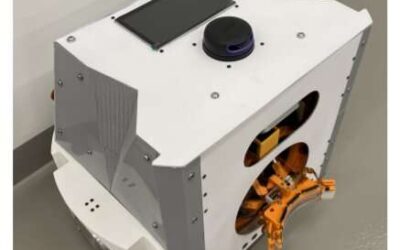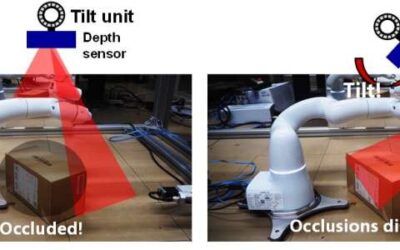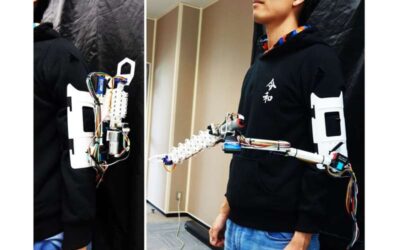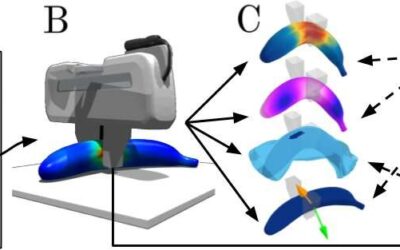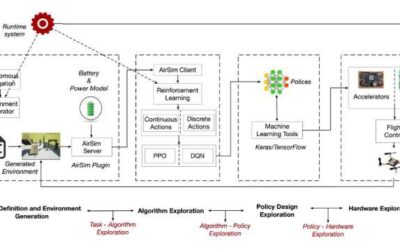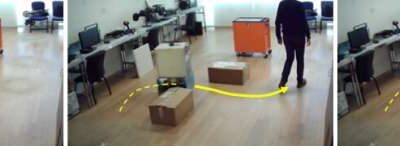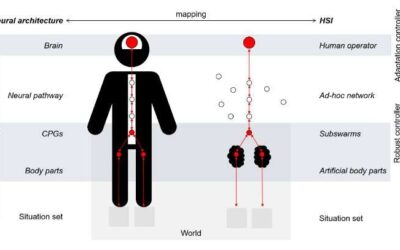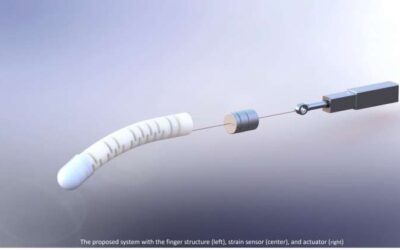Researchers at Skolkovo Institute of Science and Technology in Russia have recently developed MobileCharger, an autonomous robotic system designed to charge other robots as they complete their missions. This system, presented in a paper pre-published on arXiv, can...
Robotics
A robot vision system that diminishes occlusions using mirror reflections
To navigate their surroundings safely and most effectively, robots should be supported by a highly performing computer vision system. One of the greatest challenges when developing computer vision systems for robots is to limit occlusions so that the robot can sense...
AugLimb: A compact robotic limb to support humans during everyday activities
Researchers at Japan Advanced Institute of Science and Technology and University of Tokyo recently developed AugLimb, a compact robotic limb that could support humans as they complete a variety of tasks. This new limb, presented in a paper pre-published on arXiv, can...
DefGraspSim: A pipeline to evaluate robotic grasping of 3D deformable objects
Over the past few decades, roboticists and computer scientists have developed robots that can grasp and manipulate various objects in their surroundings. Most of these robots are primarily trained to grasp rigid objects or objects with specific shapes.
Air Learning: A gym environment to train deep reinforcement algorithms for aerial robot navigation
Roboticists worldwide have been trying to develop autonomous unmanned aerial vehicles (UAVs) that could be deployed during search and rescue missions or that could be used to map geographical areas and for source-seeking. To operate autonomously, however, drones...
A framework for robot path finding in unstructured environments
In recent years, computer scientists have developed mobile robots that could be introduced in a variety of settings. To efficiently navigate unstructured environments, however, these robots should be able to plan safe paths to reach their desired destinations.
A theoretical approach for designing a self-organizing human-swarm system
Swarm robotics is a relatively new and highly promising research field, which entails the development of multi-robot teams that can move and complete tasks together. Robot swarms could have numerous valuable applications. For instance, they could support humans during...
A tactile sensing mechanism for soft robotic fingers
In recent years, numerous roboticists worldwide have been trying to develop robotic systems that can artificially replicate the human sense of touch. In addition, they have been trying to create increasingly realistic and advanced bionic limbs and humanoid robots,...
A new taxonomy to characterize human grasp types in videos
Over the past few decades, roboticists and computer scientists have developed a variety of data-based techniques for teaching robots how to complete different tasks. To achieve satisfactory results, however, these techniques should be trained on reliable and large...
An autonomous system to assemble reconfigurable robotic structures in space
Large space structures, such as telescopes and spacecraft, should ideally be assembled directly in space, as they are difficult or impossible to launch from Earth as a single piece. In several cases, however, assembling these technologies manually in space is either...

